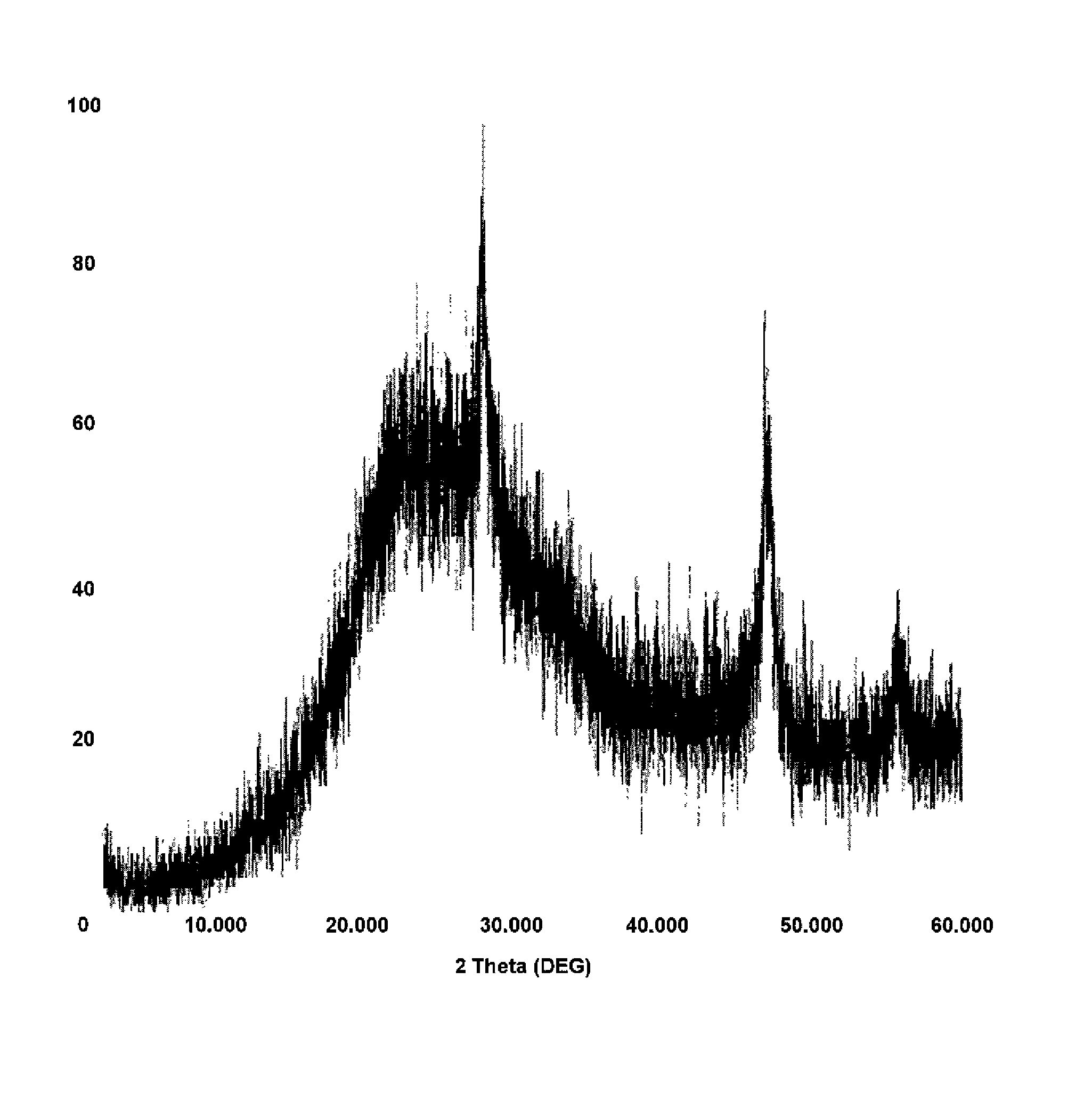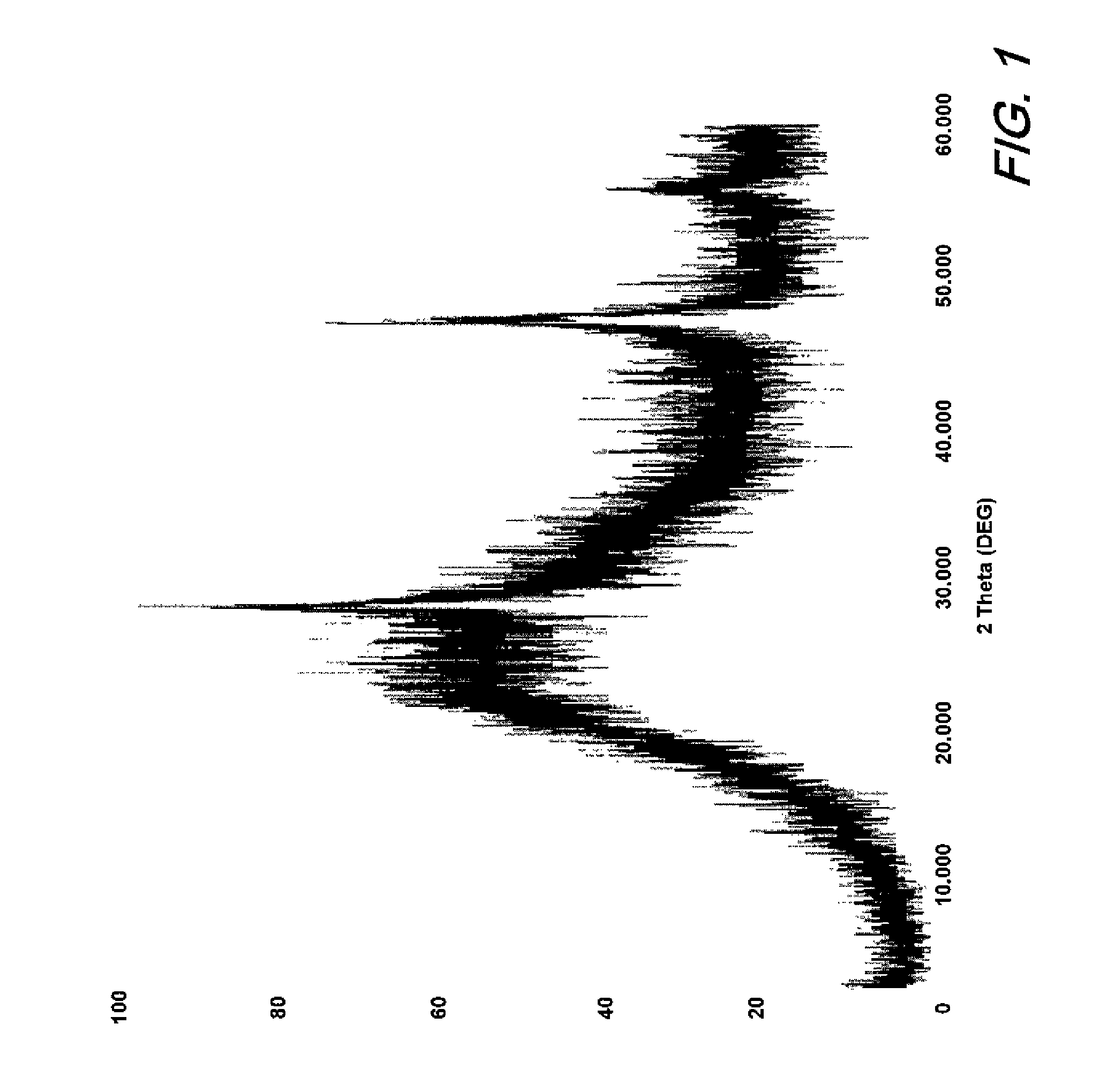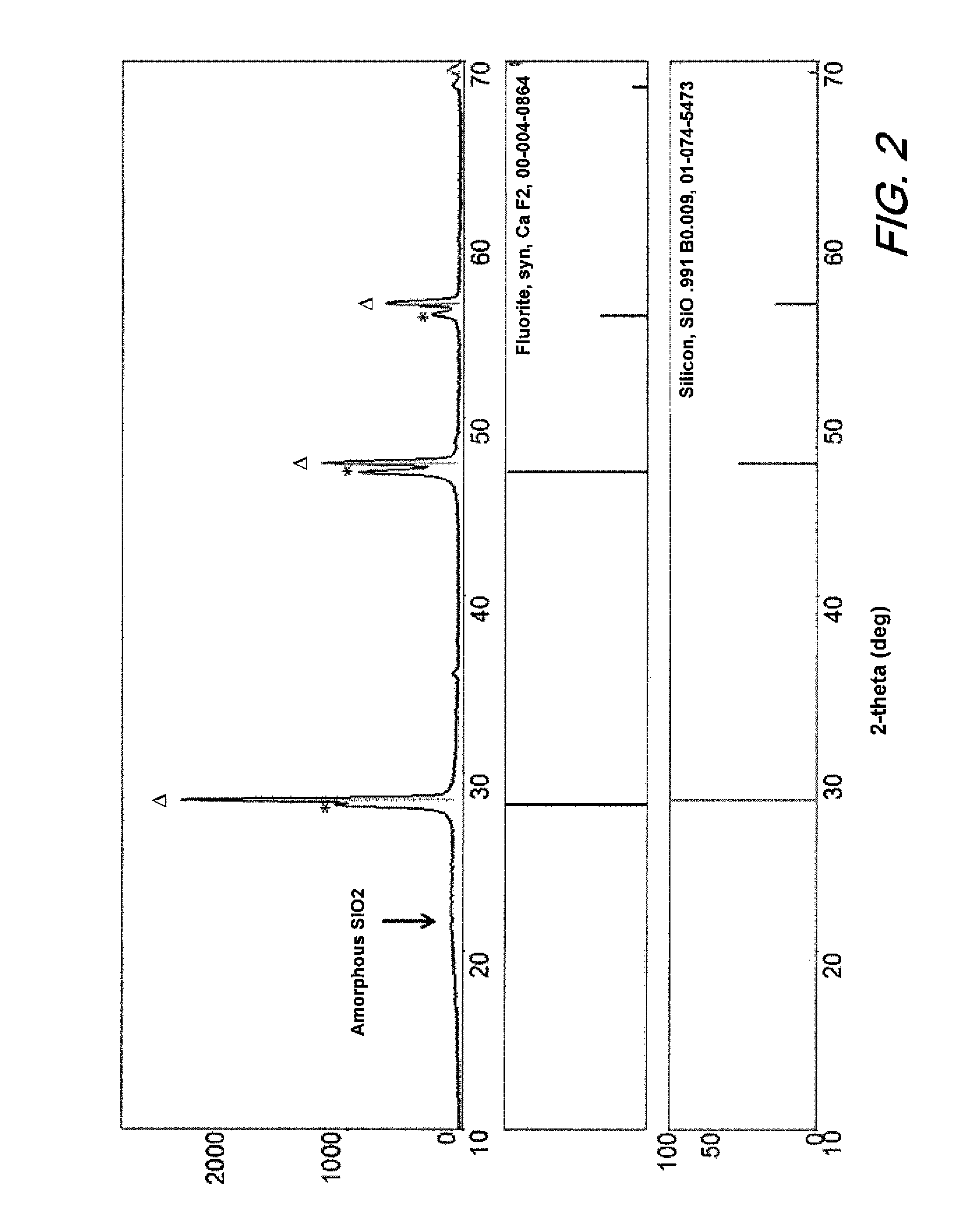Remediation of fluorine and chlorine by-products in energetic formulations
a technology of energetic formulation and by-products, which is applied in the field of energetic materials to achieve the effect of preventing the formation of undesirable chlorine and/or fluorine containing by-products and measurable energetic effects
- Summary
- Abstract
- Description
- Claims
- Application Information
AI Technical Summary
Benefits of technology
Problems solved by technology
Method used
Image
Examples
example 1
[0021]A combustion study of CaSi2 in Viton binder was used to evaluate the feasibility of calcium chloride formation during a burning event. 0.69 g of Viton was dissolved in acetone to which 0.55 g of CaSi2 was added. The mixture was stirred and acetone slowly evaporated. The dried solids were placed in a ceramic crucible (0.872 g) and combusted in a furnace preheated at 800° C. and then ramped to 950° C. for 1 hour. The solids collected were 0.619 g of grey and white material. The material was digested in sulfuric acid and the liquid tested for fluorine ions. It was calculated that the sample contained about 7% calcium fluoride. While only performed at the combustion level at atmospheric pressure, this test confirmed the formation of calcium fluoride. It is anticipated that at higher pressures and temperatures of a detonation event will further drive the oxidation of calcium with fluorine to completion.
example 2
[0022]A study using LX-07 (10% Viton / 90% HMX) was performed using Cheetah 5.0 thermochemical code and the bkws library. Upon optimization by statistical design of experiments, it was found that a formulation of 10% Viton / 83% HMX / 7% calcium silicide, HF in the final combustion products was advantageously reduced by nearly 300 times. For lkg of explosive, this brings the level of potential free HF in the reaction by-products to below 3 ppm at equilibration with atmospheric pressure and room temperature, which is within the OSHA permissible limit value (PML) for HF. A product analysis of the Cheetah detonation is shown below in Table 1.
[0023]
TABLE 1Product analysis from Cheetah analysis of detonationPerformance and detonation products (mol / kg) at full combustionDetonationTotal Formula-CJvelocityEnergytion(Mpa)(km / s)(kJ / mol)HFCAF2SiO2LX-0733.888.8210.5420.03473——83% 34.619.0511.4410.0001 0.01030.0068HMX / 10%Viton / 7% CaSi2
[0024]Silicon tetrafluoroide (SiF4) was also a detonation product a...
example 3
[0028]Two 50 g batches of explosive were made; one with Viton A, RDX, and calcium disilicide and the other without calcium disilicide. The materials were mixed in a slurry of Viton A in MEK and slowly evaporated while mixing in a Ross planery blade Pint Mixer.
[0029]The two energetic formulations were tested in a closed bomb detonation. Both formulations included a nitramine, fluorinated binder and burn suppressant, however one contained CaSi2. After detonation of the samples both solid and off gasses were analyzed. The HF was collected in a polyethylene loop cooled in a liquid nitrogen / ethanol bath and the gases bubbled through ice water. The tubing was thoroughly rinsed and combined with the ice water and analyzed with anion chromatography. Results of HF formation are summarized in Table 2. As can be seen the Percent Theoretical HF production was reduced by nearly 30 percent with the presence of CaSi2. The theoretical HF production is calculated such that all F in the binder is con...
PUM
 Login to View More
Login to View More Abstract
Description
Claims
Application Information
 Login to View More
Login to View More - R&D
- Intellectual Property
- Life Sciences
- Materials
- Tech Scout
- Unparalleled Data Quality
- Higher Quality Content
- 60% Fewer Hallucinations
Browse by: Latest US Patents, China's latest patents, Technical Efficacy Thesaurus, Application Domain, Technology Topic, Popular Technical Reports.
© 2025 PatSnap. All rights reserved.Legal|Privacy policy|Modern Slavery Act Transparency Statement|Sitemap|About US| Contact US: help@patsnap.com



